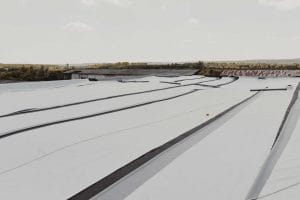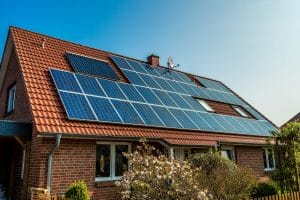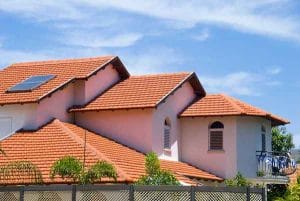As you drive up to your home, roof damage isn’t something you’re likely to notice. However, keep in mind that severe winds could have wreaked havoc on your roof during those events. Dents, loose shingles, and/or missing asphalt patches may be present on the roof. If your roof is old or you suspect it has problems, give us a call. We’re the experts, so we’ll be looking for any signs of damage that an insurance company would demand in order to cover the cost of a new roof.
Many homeowners are taken aback when they learn that wind damage to their properties is a possibility. Branches, trees, and electrical lines can all be damaged or even blown over in high winds, putting your home and the surrounding region at risk. While the aftermath of a wind storm brings these perils, the wind itself may cause structural damage to your home just as easily. In the event of heavy winds, shingles might be loosened or blown off the roof. Even newly installed, weather-resistant shingles might be ripped away by strong winds. Tree limbs and toppled power wires are only two examples of other wind-related roof damage.
For one thing, roofs are particularly vulnerable to wind damage because heavy gusts don’t impact them all the same way. As a result, the wind tends to destroy roofs that have previously been weakened by the wind. Winds can more readily pull off loose shingles, producing a chain reaction, making certain areas of the roof obvious targets. Falling items and debris are other prevalent causes of damage to roofs. It is possible that your roof will begin to leak or decay after sustained wind damage.
The decking beneath the shingles should be robust and solid, and your fasteners should be high-quality if you want the greatest roof for severe winds. The importance of craftsmanship cannot be overstated.
Wind Damage Speeds
45 mph to 57 mph
Winds of 45 mph can cause little damage, according to the National Weather Service, although this range is classified as “non-severe.” Non-severe winds may force tree limbs to break off, causing harm to shingles that are already loose or vulnerable.
58 mph to 74 mph
When winds get very strong, they can cause major damage to landscape and structures. Winds in this range will bring down entire tree branches, uproot trees, peel off shingles in good shape, and cause chimney problems.
75+ miles per hour
At this pace, trees will be uprooted, mobile homes will be flipped, and business and residential roofs will be severely damaged.
Wind Damage to Your Roof: How to Recognize It
Granules in Spots Shingles are Missing from Your Collection
Wind, like hail, can induce granule loss (the sandpaper-like part of the shingle). The first place we examine to see if you have missing granules is in your gutters, which is where they tend to accumulate.
The Roof’s Edge is Curling Due to Peeling Shingles
The wind is more likely to cause damage to the roof’s edges and other pressure points. We’ll search for curling shingles where the wind has taken hold and begun to peel the shingles during our examination. Shingles keep water out, so if they come loose, water damage and a rapidly disintegrating roof will result.
Roof Shingles Are Missing In Their Entirety
The loss of complete shingles is one of the most obvious signs of a wind-damaged roof. If you notice shingles in your yard or around your property, you should have an expert inspect the area to see what else might be causing you problems. Strong winds can totally pull shingles off your roof, exposing it to the elements.
A Flat Rubber Roof with Cracks or Tears
We’ll examine for missing pieces or rips in the material if you have a flat roof. Wind can raise the material and pull it away, or leave it with bubbles, compromising the covering’s integrity.
Soffit or Fascia Damage
Soffit and fascia, like shingles, keep water away from the roof, lowering the risks of a leak. When soffit and fascia are broken, they can let water and stray animals into your home. Cracks, loose or twisted regions, and even complete removal of loose fascia can all be caused by the wind.
Chimneys
Is your chimney a touch off-kilter? This should alert you to the presence of a problem. We occasionally discover missing lashing, which compromises the chimney’s seal and allows water through.
Roof Leaks and Indicators of Roof Damage Indoors
Going inside your house to search for roof damage may seem illogical, but the clues may be written on the walls. There’s a significant probability your roof is leaking if you see discoloration, moist areas, or flaking paint.





